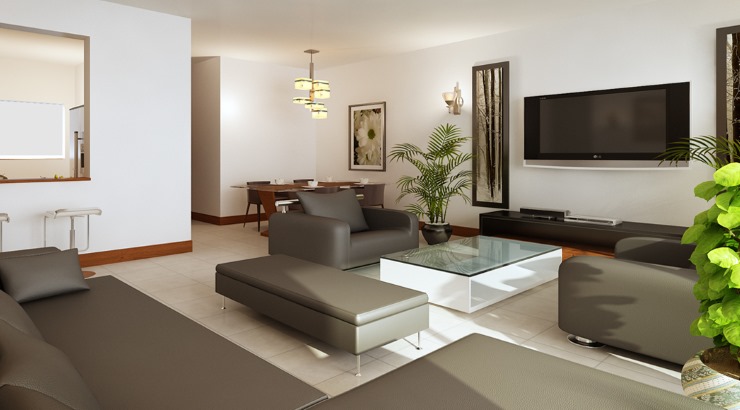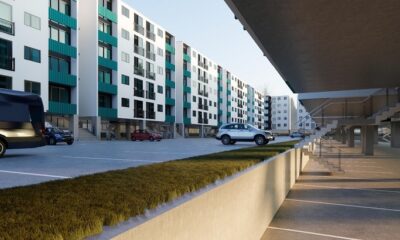Features
Trends in hospitality design
Guest room design in the Kenyan market is becoming less conservative.

The hustle and bustle of the modern life has seen travellers looking for hotel experiences that play on the idea of escapism,” says Sandra Nolan, an architect working on a hospitality project in Malindi.
Thanks to new lifestyles, it is becoming less common for hotels to be designed exclusively for business travellers or leisure guests. Indeed a majority of hospitality establishments are trying to address business needs while providing a certain degree of escapism to the guest.
Bathroom design
According to Nolan, a great shower experience can be used by a hotel to help guests escape from today’s hectic pace. “A spacious, spa-like bathroom with a great shower can help guests experience some level of escapism,” she says.
However, while hotel bathrooms are becoming larger the guest rooms are not necessarily getting more square footage. Instead the rooms are being furnished with fewer but high quality pieces to create an illusion of largeness.
Guest room design in the Kenyan market is also becoming less conservative, Nolan says the focus is once again on the bathroom. New designs are creating a more open feeling in guest bathrooms, with doors remaining open when the room is not in use.
Bathroom designers are changing the way bathrooms and bedrooms relate to each other visually. For instance, the typical wall is now being replaced with a glass pane filled with magnetically-oriented particles. This pane is in some cases designed to alternate between transparent and opaque at the touch of a button.
Nolan says she prefers a big glass window between the guest room and bath area or having the bathroom situated on the outside wall for excellence views and natural light.
“Our international projects are a little more flexible – adding warmth to the room,” she says. “The Kenyan market is, however, more concerned with privacy but we’re trying to change this.”
Hotel fitness facilities and spas also offer guests a chance to get away. “The wellness factor is really growing,” says June Ngacha, a freelance fitness consultant. “It is becoming an absolute necessity that every hotel needs a spa.”
Interestingly, facilities in modern hotels are getting bigger and more elaborate than those in resort projects. This is because guests staying in urban settings have limited access to the outdoors unlike those guests staying at resorts – depending on location of the property.
Even though sustainable design does not strictly conform to the model of escapism in hotel design, sustainability is the word on everyone’s mind. “It’s something that clients, hotel guests, and designers have as their primary focus. My company designs all projects with sustainability in mind,” says Ms Ngacha.
The modern guest is also seriously seeking for eco-friendly establishment. “It is encouraging that guests are becoming so knowledgeable that it’s not just about the bedsheets being washed or not being washed everyday,” says Nolan. “They are more concerned about the systems put in place such as electricity and water conservation.”
Hospitality experts are predicting that green practices and sustainable elements represent the future of hospitality design. As a result, designers are busy exploring and looking for new areas where ‘green’ can be applied.
Comfort and style
Today’s trend in hospitality reveals that a more relaxed use of space is the current big thing. Peter Gitau, a Nairobi based hospitality architect observes that hotel interiors are changing as well – becoming more open and spacious. “Openness is really the trend. People want to see what is happening around them,” he says.
Arriving guests easily locate strategically placed reception counters and new lobby designs aid orientation by giving visitors clear sight-lines to conference foyers, restaurants, health clubs and other hotel amenities.
In keeping with more relaxed business styles, new convention resorts have indoor/outdoor pre-function areas or break-out rooms. Windows let daylight into once-isolated meeting rooms and landscaped pre-function areas create a more comfortable, relaxed work environment.
Homelike environment
In the guest room itself, notes Gitau, a more homelike environment tops the list of trends. Designers are introducing features such as adjustable lighting, water fountains, more harmonious color schemes and aromatherapy. Fitness-conscious guests may even find a stretch bar or stationary bike in their rooms, a convenient and private option to the hotel’s health club.
Entertainment has also taken a step forward. More guest rooms have CD players, and designers are encouraging hoteliers to replace awkward armoire-style entertainment centers with flat-screen televisions. This can cut an average of four inches (10 cm) off each individual room – an economically savvy choice for the owner of an 800-room hotel.
With the hospitality industry evolving faster than what analysts had predicted just a few years ago, it will be interesting to see the kind of amenities that travellers of the next decade will be demanding for.












